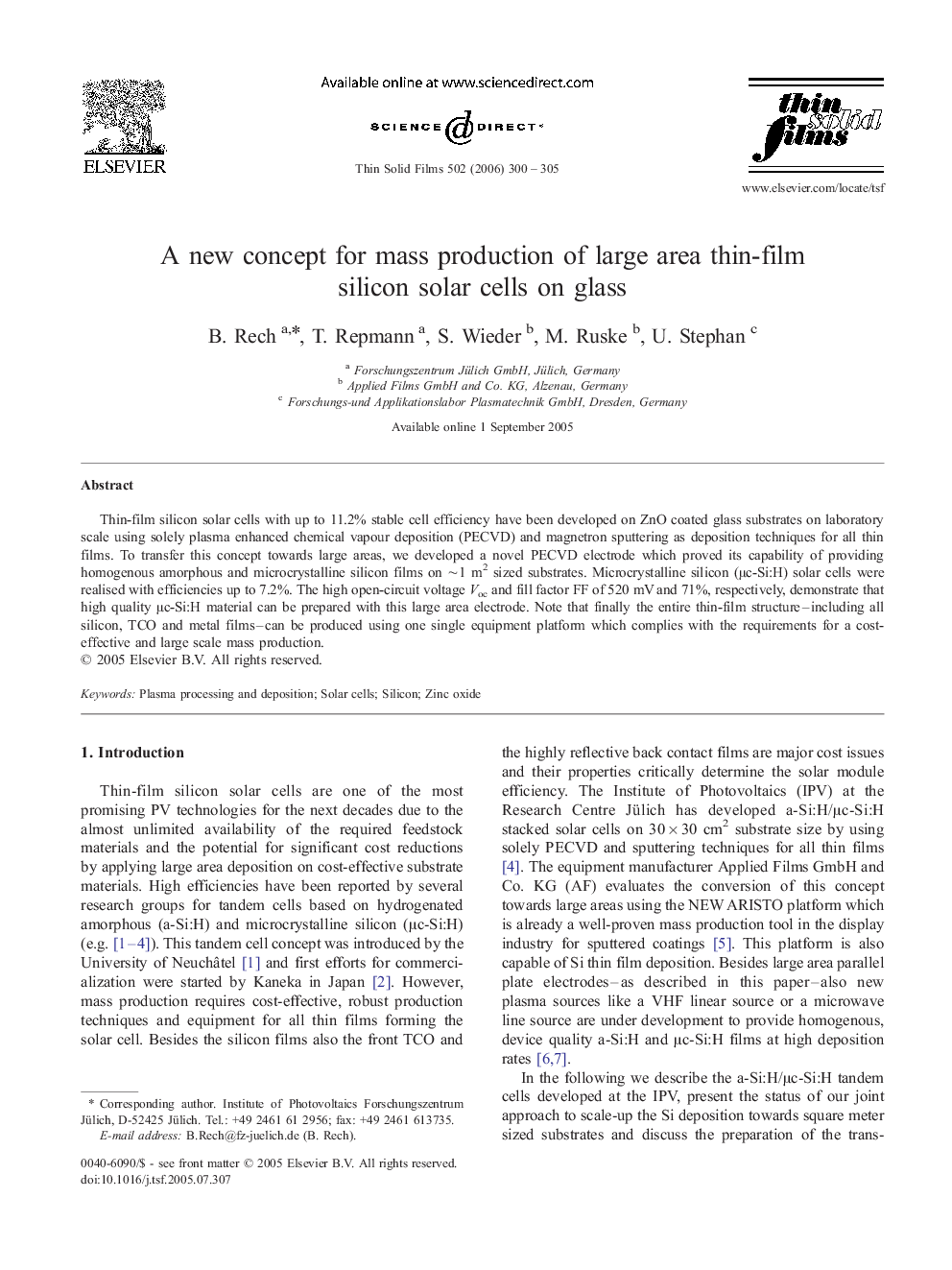| Article ID | Journal | Published Year | Pages | File Type |
|---|---|---|---|---|
| 1673700 | Thin Solid Films | 2006 | 6 Pages |
Abstract
Thin-film silicon solar cells with up to 11.2% stable cell efficiency have been developed on ZnO coated glass substrates on laboratory scale using solely plasma enhanced chemical vapour deposition (PECVD) and magnetron sputtering as deposition techniques for all thin films. To transfer this concept towards large areas, we developed a novel PECVD electrode which proved its capability of providing homogenous amorphous and microcrystalline silicon films on â¼1 m2 sized substrates. Microcrystalline silicon (μc-Si:H) solar cells were realised with efficiencies up to 7.2%. The high open-circuit voltage Voc and fill factor FF of 520 mV and 71%, respectively, demonstrate that high quality μc-Si:H material can be prepared with this large area electrode. Note that finally the entire thin-film structure-including all silicon, TCO and metal films-can be produced using one single equipment platform which complies with the requirements for a cost-effective and large scale mass production.
Related Topics
Physical Sciences and Engineering
Materials Science
Nanotechnology
Authors
B. Rech, T. Repmann, S. Wieder, M. Ruske, U. Stephan,
